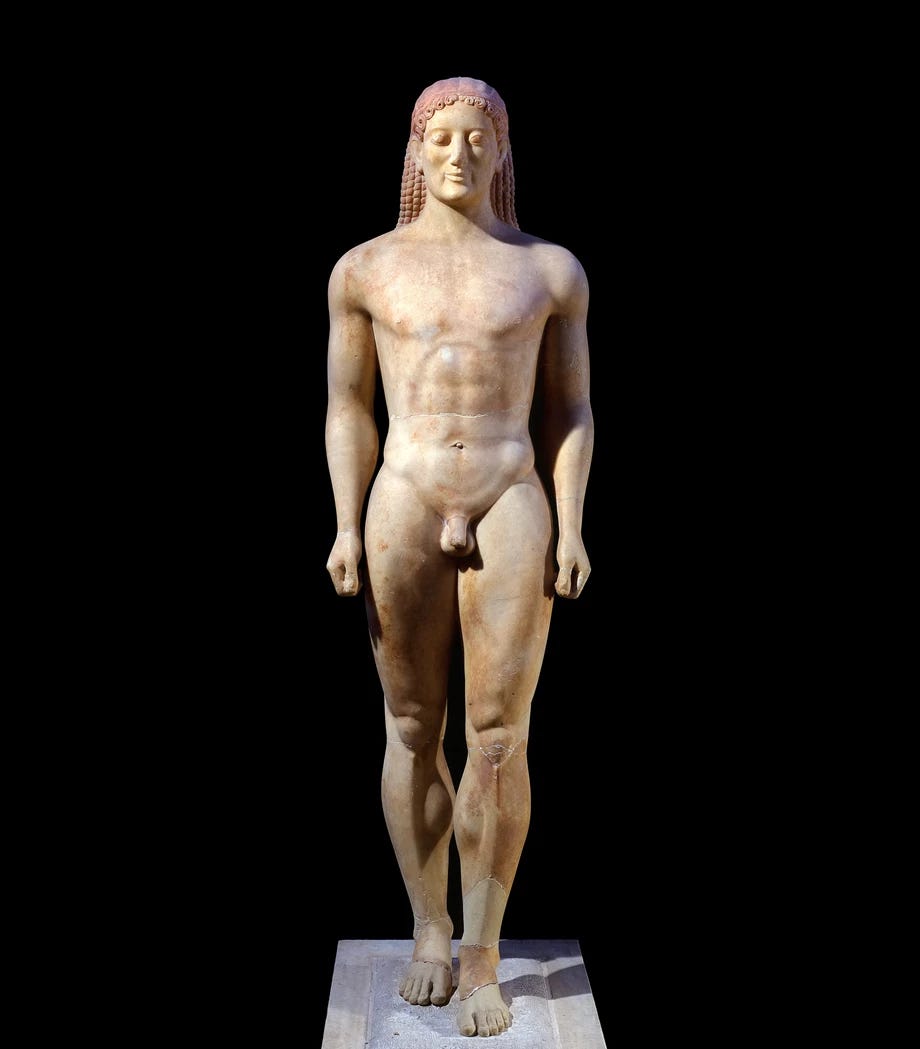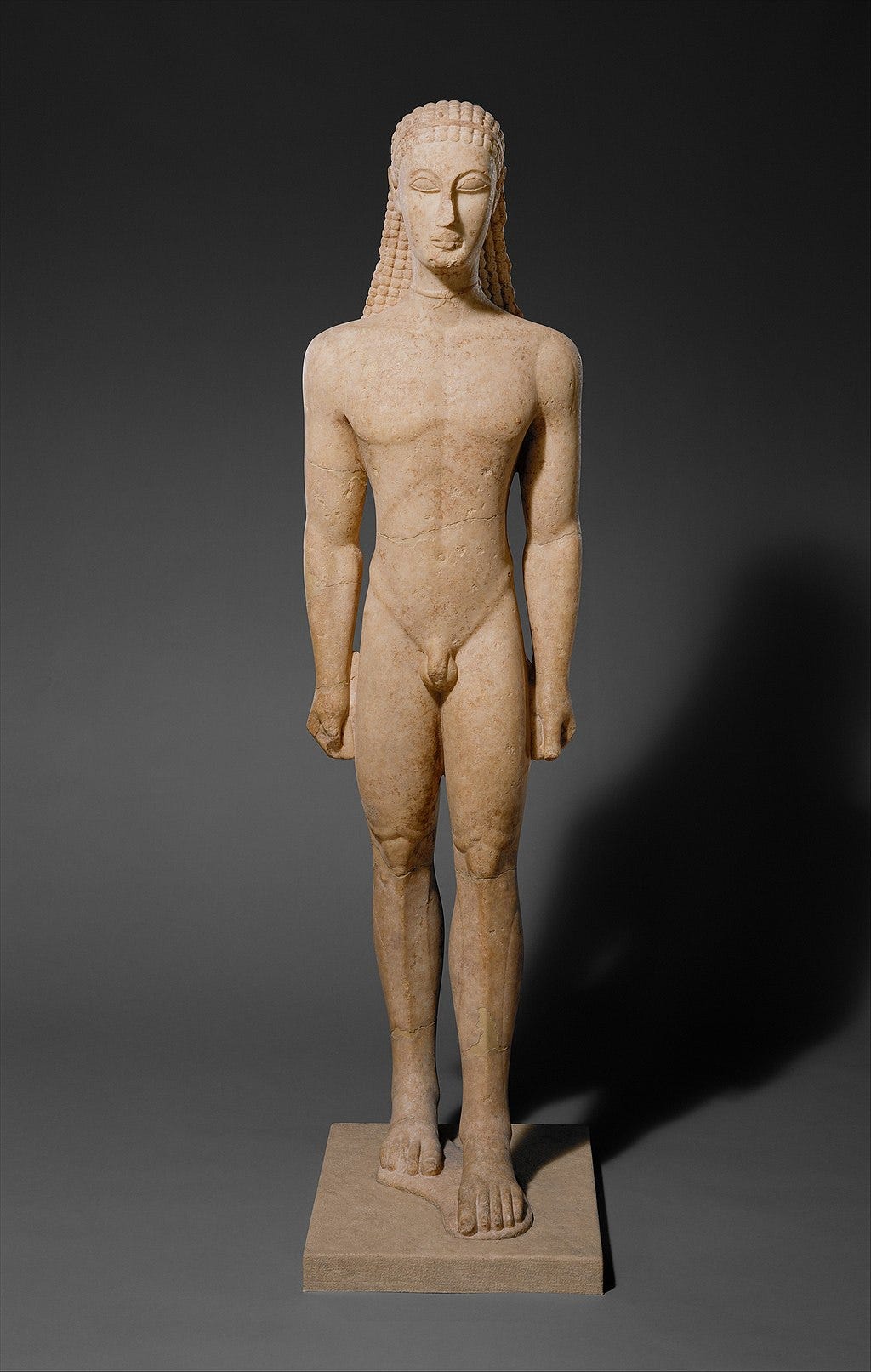"Stop and mourn at the grave of dead Kroisos, whom the raging Ares destroyed when he fought in the front ranks." This is the inscription found at the base of the "Kroisos/Anavyssos Kouros", a significant Late Archaic-era statue found in Attica in 1936. The work is dated to 540-515 BC.
Over six-feet tall and made of Parian marble, the Kouros (meaning male youth) still shows traces of red dye - most noticeable in the hair and over the eyes. The statue stands in the classic Kouros pose, with arms stiffly set by the side, and an "Archaic Smile" to make the art more lifelike. Compared with Kouroi from a generation earlier (below, from the Met's Collection), one can see how drastically the style progressed. By the second half of the sixth century AD, the Kouroi showed more realistic proportions and anatomical perfection.
After its discovery, the Kroisos Kouros was cut into ten parts, stuffed into three pieces of luggage, and smuggled illegally to Paris. In the summer of 1937, Greek officials located the fragments in the possession of Parisian antique dealer "M. Roussos." The parts were shipped to Athens and assembled into the figure we see today (at the National Archaeological Museum, Athens).
Kouroi were often placed at burial sites in Ancient Greece. They showcased the ideal male figure, and in the case of the Kroisos Kouros, the physique of a powerful warrior whose life was cut short in the storm of battle.
Source: Annual Report of the British School of Athens, 1936.





